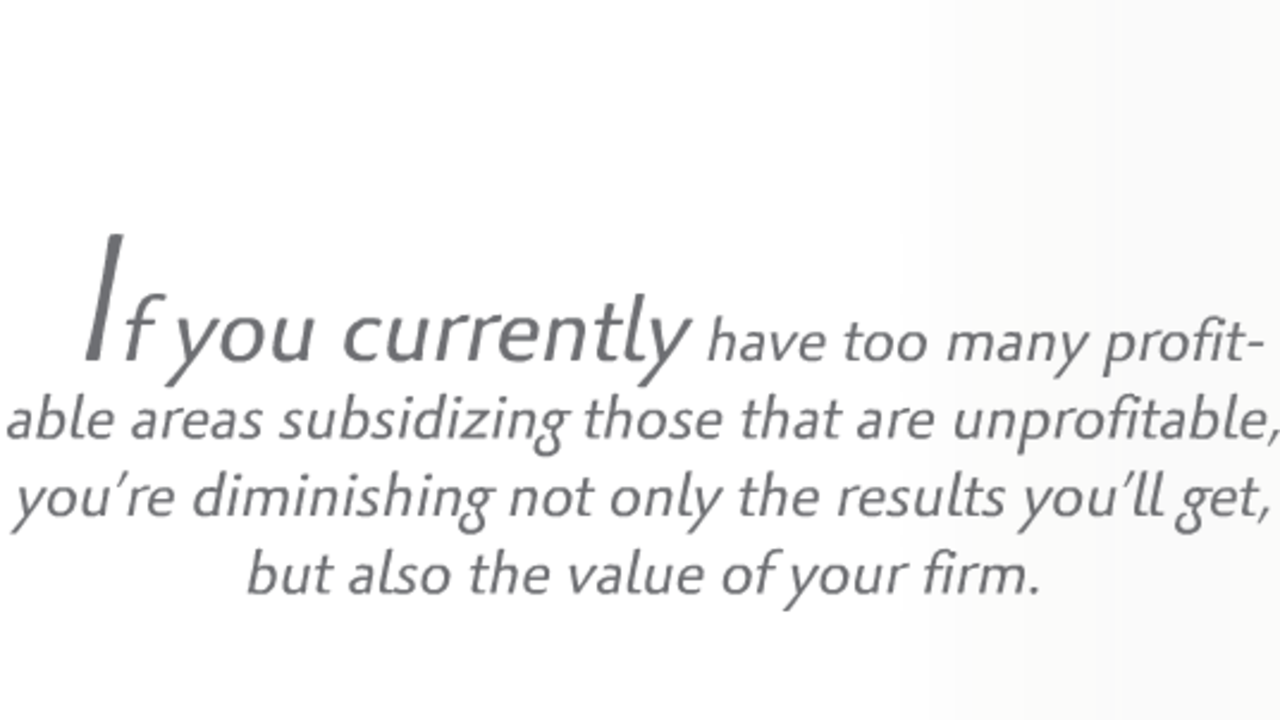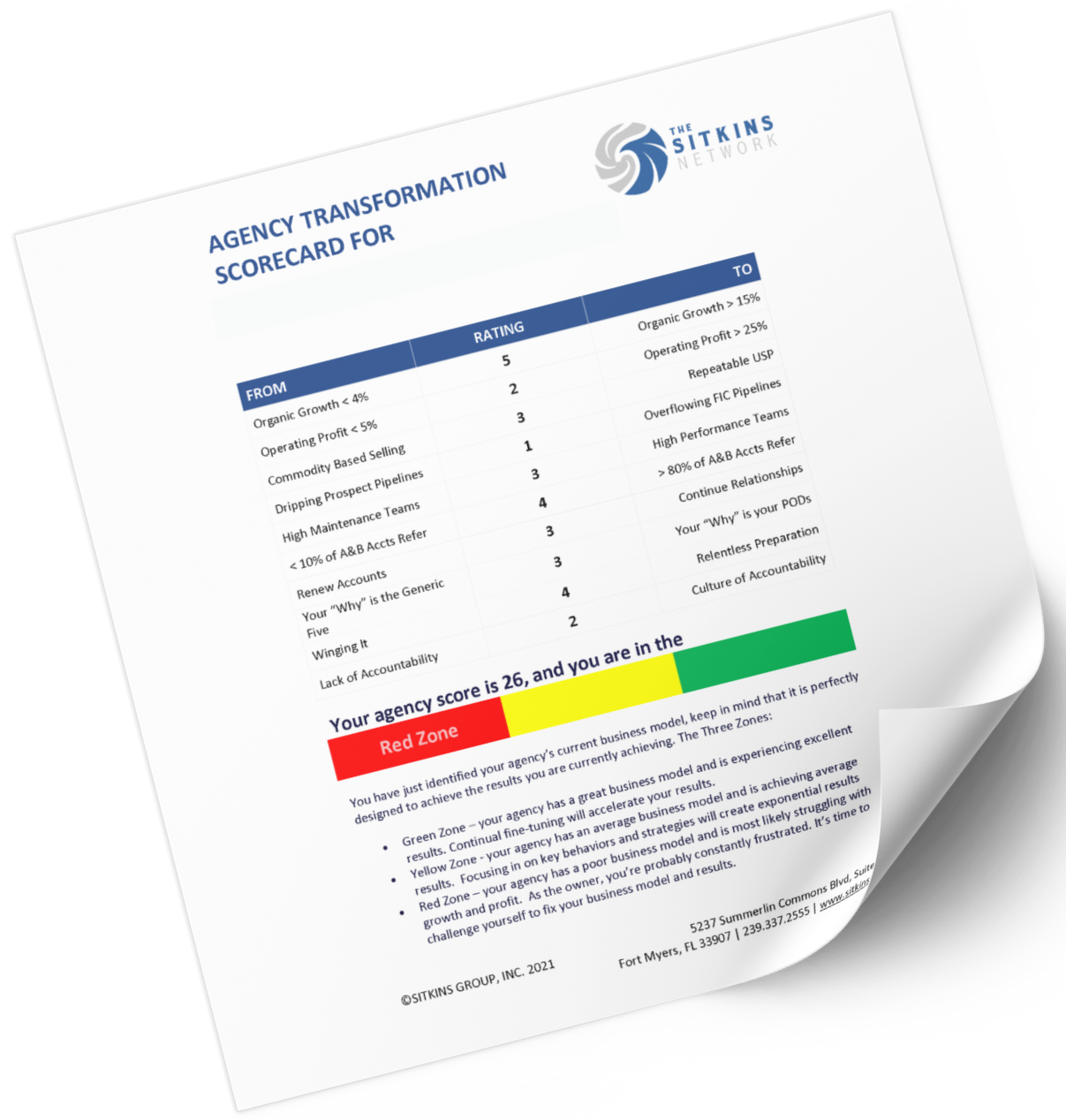The Five Profit Zones: Part Two

Profit zone #3: Non-producer employees
View every employee as either a profit center (contributing to your profitability) or a loss center (taking away from your profitability). Here are the major factors affecting non-producer employee profitability:
- Low productivity. If they’re in a service position, they’re just not handling enough revenue per employee and/or they’re not completing their work efficiently and quickly.
- Lack of ongoing training. If you’re not training your employees on a regular basis, how do you expect them to do what you want them to do? They can’t, especially if you’re not holding them accountable.
- Mismatched employees and jobs. Too many agencies don’t have explicit job descriptions or aren’t using outside testing resources to profile prospective employees—which we believe is one of the best ways to ensure that a new hire has the factory-installed equipment to do the job well.
Profit zone #4: Operations
The concept of operating profit vs. profit shouldn’t be news to you if you’ve read this column before. We’re basically asking ourselves: If we earn zero contingency/profitsharing income this year, what would our financial results be? For most agencies, the answer would not be acceptable. These are the major factors affecting operating profits:
- No financial model.
- Producer compensation. Have you noticed a trend here?
- Low revenue per client. Do you see another trend?
- Abundance of part-time clients. I think we may have a trend trifecta!
- Retention issues. Every one percentage point of retention decrease could equal a 3% to 4% decrease in profitability.
- It’s great to be in the insurance agency business, but it’s really very easy—maybe too easy—to earn an extremely healthy income. No pain equals no change!
Profit zone #5: Owner profitability
All owners must contribute to the overall agency profitability. Unfortunately, way too many agencies have one or more of the following categories of owners: deadbeat shareholders, retired in place (RIP) shareholders, or overpaid owners. Owners need to be thought of as operating profit centers, also. They have to carry their own weight.
Following are the major factors affecting owner profitability:
- Compensation. Owners should be compensated for three things:
- Book of business. Get paid as a producer. If you’re willing to pay a producer 40% new and 25% on renewal, that’s what you should be paid as an owner.
- Management responsibilities. Pay what we call the full-time equivalent for your management responsibilities. For example, let’s say a sales manager in your market makes $200,000 for managing a company that’s the same size as yours and one of your owners spends 50% of their time being the sales manager. That owner should get the full-time equivalent—$100,000—for being the sales manager. Conversely, if the CEO of a similarly sized company in your town gets $200,000 a year and one of the agency owners spends 75% of their time as CEO , they should get $150,000 for being CEO.
- Ownership. This is the percent of distributions. So if I own 42% of the agency, and we agree to distribute $200,000, I’d get $84,000. Overall, this is the fairest way to compensate owners. Pay them for what they contribute in commission income, pay them for their management responsibilities and pay them for what they own.
- Lack of growth. The lack of agency growth is a huge concern and is usually due to RIP owners. So what do you do when your agency stops growing?
Keep in mind that a RIP owner is like the old dog chasing the car. The dog doesn’t really want to catch the car, it just loves the chase.
Similarly, most veteran owners have great natural pipelines (cars) because they’ve been cultivating them for years. That’s why we always encourage owners to share them. We’ll ask them to write down the names of a handful of local business people and community leaders they know who are not clients now, but who would take the owner’s call if he or she contacted them. Without fail, they come up with a long list of names. So why aren’t they calling them? Because as much as they love the chase, they don’t want the extra work. However, if they’re willing to make a phone call on behalf of a younger producer, they can be the rainmaker and the newer producers can be the buckets under them.
The bottom line
When it comes to profitability, we often talk about the GrowFit model, which is the percentage of net new revenue growth plus percentage of operating profit. The combined result should total at least 25.
At the Mastery level, the minimum goal should be 40. If you currently have too many profitable areas subsidizing those that are unprofitable, you’re diminishing not only the results you’ll get, but also the value of your firm.
What is having a negative impact on your profit zones and what will you do about it? How will you change those negatives into positives? Or will you continue to let the profitable subsidize the unprofitable? It’s your choice!
Stay connected with news and updates!
Join our mailing list to receive the latest news and updates from our team.
Don't worry, your information will not be shared.




